Apple cofounder Steve Wozniak was expelled from the school where he just delivered his commencement speech—’be leaders, not followers’
Sunny Nagpaul
Sat, May 11, 2024

Dana Jacobs/Getty Images
Apple cofounder Steve Wozniak was in high school the first time he left his home state of California. He was boarding a flight to Boulder to check out the University of Colorado campus with some friends.
The electronics prodigy had designed his first computer at age 13, and by the time he applied to colleges, he was a candidate for several of the country’s top technology schools. But that first night in Boulder changed things for him. He saw snow for the first time and fell in love with the beauty and “freshness” of the school.
Wozniak recalled the one year he spent at the school, from 1968 to 1969, in his Thursday commencement speech to the University of Colorado Boulder’s class of 2024. He described going to his first concert (Simon and Garfunkel), and showing his fellow Apple cofounder Steve Jobs his favorite Bob Dylan records. Still, when “I look at my yearbook from that year,” he told students, it “shows a lot of soldiers on this campus with assault rifles during the Vietnam War protests.”
In his speech, Wozniak affirmed the importance of intellectual freedom through his own experiences as one of the country’s most influential leaders of electronic innovation, citing the institutional and bureaucratic pushback on his own technological creations, and the military presence that had taken over the campus. Today, as more than 80 college encampments across the country protest the U.S.’s financial support of Israel’s military campaign in Gaza, Wozniak’s perspective comes at a time many are calling to protect academic freedom.
After Wozniak visited Boulder for the first time, he said in the speech, “I told my parents I would only apply to this one school, none of the others.” They told him they only had enough money to afford one year of out-of-state tuition at the school, but told him to follow his heart. That freedom he experienced, he said, became invaluable advice to him.
“My parents let me follow my heart,” he said, “So I was careful to be that way with my own children; their choice is the most important.”
It wasn’t always smooth sailing, though. Institutional pushback was prevalent in the computer labs he studied at.
“Instead of being praised here for some really good scientific programs I wrote, with the one huge massive computer down in the basement, I was demeaned because I ran my class five times over budget,” he said. “I didn’t realize it boiled down to money and bureaucracy and that kind of stuff.”
To be fair, Wozniak was expelled from the school after his first year for hacking into the school’s network and sending prank messages. Still, he faced resistance even while developing innovative computer programs “at a time when there were no books on the subject,” he said.
He made a decision: “I knew computers by heart. I decided I wanted a computer of my own that I could decide what to do with it.”
The goal for that computer, he said, was to “help other human beings do more with their lives than they could do without a computer, and not to rely on million-dollar mainframes that companies and universities could afford.”
That dream was soon realized. In 1976, Wozniak built out the first versions of Apple’s personal computers, and the following year, the company released the Apple II, one of the earliest personal computers available to the general public, which was met with huge commercial success. In 1985, Wozniak left his role at Apple to find an engineering role that didn’t also involve running a fast-growing business, selling much of his Apple stock upon his departure, according to Business Insider.
Since then, Wozniak has leaned into the country’s education system, spending eight years teaching fifth grade. He presented the graduating class with some advice he has collected from all of that experience: “You grow up in education to be leaders, not followers. Think for yourself and decide what’s right and wrong.”
Today, as the country faces some of the biggest student protests since those that emerged during the Vietnam War, his words of advice have taken on deeper meaning. According to a tally by the Associated Press, since April 18 there have been at least 38 incidents of arrests made at campus protests across the country, with more than 1,600 people arrested at 30 schools.
College campuses have been engulfed by student dissent following the brutal Oct. 7 Hamas attack on Southern Israel, which killed over 1,200 people, and Israel’s response, a catastrophic military campaign which has killed more than 34,000 Palestinians, now entering its seventh month. Along with demands for divestment and financial transparency, protesting students also aim to show solidarity with millions of Palestinian civilians facing calamitous levels of disaster, including famine, disease outbreaks, and a children’s crisis, in which at least a thousand children have lost limbs and over 19,000 children have been orphaned because of indiscriminate bombing in the war.
At Columbia University, for example, over 200 people were arrested in two police raids that occurred on April 18 and April 30, the latter of which, coincidentally, is the same day 700 students were arrested for protesting the divisive Vietnam War and Columbia’s expansion into Harlem more than 50 years ago.
Archon Fung, a professor of political science at Harvard, told Fortune there are important parallels between the protests, especially in terms of how university administrations respond to acts of civil disobedience. Civil disobedience “has an important place in democracy,” Fung said, adding, “civil disobedience is, by definition, breaking the rules.”
For college students who will soon leave the walls of their campus to become the next generation of leaders, bosses, and entrepreneurs, Wozniak offers a modern twist on some old-school advice: “you all have AI–actual intelligence.”
“Pay your own success forward,” he implored students, “and keep teaching and mentoring others.”
New Mexico governor seeks hydrogen investment with trip to Netherlands
Sat, May 11, 2024
SANTA FE, N.M. (AP) — The governor of New Mexico has announced plans to court new investments in hydrogen fuel development at a business summit in the Netherlands over the coming week.
In a news release Friday, Gov. Michelle Lujan Grisham said she'll lead a delegation to an industry summit exhibition in the port city of Rotterdam seeking the “opportunity to sell New Mexico as a dynamic and thriving place for hydrogen industry investment.” She led a similar mission last year to Australia to talk with hydrogen entrepreneurs.
Lujan Grisham, a Democrat, has been a vocal proponent of investments in hydrogen as a transition fuel that can replace fossil fuels with cleaner-burning hydrogen as an energy source for vehicles, manufacturing and generating electricity.
Some environmentalists call hydrogen a false solution because it frequently relies on natural gas as a fuel source. Several New Mexico-based groups have resisted proposed state incentives for hydrogen development, citing concerns that it would prolong natural gas development and increase demand for scarce water supplies.
Hydrogen also can be produced through electrolysis — splitting water molecules using renewable energy sources such as wind and solar power, as well as nuclear power.
New Mexico is a major energy producing state with extensive natural gas reserves and broad recent investments in electrical transmission lines aimed expanding renewable energy production from sources including wind and solar.
The Biden administration last year passed over a four-state bid by New Mexico, Colorado, Utah and Wyoming for a share of $7 billion aimed at kickstarting development and production of hydrogen fuel. It chose instead projects based in California, Washington, Minnesota, Texas, Pennsylvania, West Virginia and Illinois.
The hydrogen summit in Rotterdam has an array of public an private sponsors. Lujan Grisham is traveling with office staff, New Mexico cabinet secretaries for the environment and transportation, and husband Manny Cordova. The New Mexico delegation also includes Rob Black, president of a statewide chamber of commerce.
The Associated Press
ORIGIN OF THE U$ DRUG CULTURE
79% of parents say they’ve given their kids sleep aids, from melatonin and Ambien to THC
Beth Greenfield
Sat, May 11, 2024

Getty Images
Parenting brings many joys, but sleep deprivation is not one of them. So, it’s no wonder that moms and dads are willing to take some drastic measures—in the form of sleep medications—when it comes to getting their kids down for the night.
New survey results from Sleep Doctor reveal that 79% of parents have given their child a substance to get them to sleep—with 66% using melatonin, 35% using Benadryl, and 20% turning to prescription sleep aids. Others reported using everything from herbal and over-the-counter aids to CBD, THC, and even alcohol.
Millennial and Gen Z parents were most likely to have drugged kids for slumber, with 84% and 83%, respectively, saying they had done so.
“Parents are desperate, they’re tired, they’re juggling so many things … and a child having difficulty sleeping just piles onto that,” says Dr. Nilong Vyas, pediatrician, public health specialist, and board-certified sleep expert working closely with Sleep Doctor, which conducted the survey of 1,201 parents in April.
Kids need sleep for physical and mental health, with research showing it plays an important role in brain development, mood, cognitive performance, resiliency, language, and memory, according to the Sleep Foundation. Parents need sleep for many of the same reasons, including mood, brain performance, immunity, lower risks of heart disease and stroke, and, according to a recent study, to avoid an uptick in stress levels.
Parents as a rule miss out on vital rest when their kids don’t snooze—and 25 to 50 percent of children (40 percent of adolescents) are affected by sleep problems like sleep apnea and night terrors, according to the American Academy of Pediatrics, while insomnia affects 25% of children and 35% of adolescents.
Still, Vyas tells Fortune, “Ideally it’s better to change [bedtime] behaviors and modify them so a child can learn to fall asleep independently, without the need of supplements.”
But isn’t melatonin safe?
Melatonin, a hormone produced by the brain in response to darkness, serves to regulate the body’s natural sleep-wake cycle, called circadian rhythm. It’s sold as a supplement that’s not regulated by the U.S. Food and Drug Administration, often in the form of colorful gummies, and, when taken by kids, comes with possible side effects including drowsiness, headaches, and increased bed wetting.
Taking too much can cause vomiting, extreme sleepiness, and slurred speech. And according to a recent report from the U.S. Centers for Disease Control and Prevention, it’s why about 11,000 children (more than half between 3 and 5 years old) wound up in the ER after unsupervised melatonin ingestion between 2019 and 2022.
Further, an assessment of 25 types of melatonin gummy supplements by Cambridge Health Alliance, published last year in JAMA, found that almost all of the products were inaccurately labeled, with the actual quantity of the hormone ranging from 74% to 347% of the labeled amount. One product contained no detectable levels of melatonin but did contain over 31 mg of CBD, which has no data supporting its use in children.
“It’s like the wild, wild west out there with melatonin supplementation,” says Vyas, who does not recommend its use to families she works with.
“Many studies have shown positive improvement with melatonin for use in neurodiverse children, those with circadian rhythm disorders, delayed sleep phase syndrome, and jet lag—a handful of indications,” she says. “But there aren’t enough studies to give out a general recommendation.”
It’s also not a great idea, she adds, because of how melatonin works: on a feedback loop, meaning that if it’s being provided from an outside source, then the body slows down its natural production, and more and more of the supplement is required.
“Plus, it can have a paradoxical reaction, meaning that many kids will take it and then wake up at 3 or 4 in the morning,” she says.
The Sleep Doctor survey found that kids between 4 and 7 were given melatonin more often than any other age group, followed by those who were between 8 and 12 and between 1 and 3; but 2% gave it to a child under six months old and 3% to a child six to 11 months old. Further, while most parents (97%) gave melatonin to their child more than once, 21% said they’d done so about 10 times and 13% said it was at least 50 times. And 45% of parents say it was recommended by their doctor.
That’s not surprising to Vyas, considering the combination of desperate parents and “a huge lack of education on sleep habits” for physicians, who may go to look for studies on melatonin for kids and not find much—and who may just assume it’s safe, given that it’s unregulated and available.
Other sleep aids—and how to avoid them
Using Benadryl (diphenhydramine), an antihistamine that comes with a side effect of sedation, is not recommended by medical professionals, except for very occasionally (to help with jet lag, for example).
“It’s indicated and tested for children with allergies, so if you’re using it outside of those parameters then you’re using it off-label, and it’s not without its own side effects,” she says, warning that, in some cases, Benadryl could have the opposite effect and make a kid “completely wired.” Using it on a nightly basis, she warns, “creates a false ability of being capable of falling asleep.”
When it comes to prescription sleep aids, such as Ambien (zolpidem), Sonata (zaleplon), and Restoril (temazepam, a highly addictive benzodiazepine), all are explicitly not to be used in children. But they have been administered to kids by parents, according to the survey, with 64% saying it was at the recommendation of a physician. In fact, 13% of parents said they gave prescription sleep aids 50 or more times; 4% gave it to a child under six months old, 11% to a child six to 11 months old, and 16% to a child between 1 and 3.
“Ambien is even risky for adults to use, there are so many nasty side effects,” says Vyas. “It’s been tested and indicated to be used in adults short-term, but a lot of people become so dependent on it that it’s hard to sleep without it … It’s being used chronically, on a daily basis, in lieu of good sleep habits and hygiene.”
What does that look like for kids? “Consistency of routine is critical,” she says, as is following the child’s sleep cues so they can fall asleep when their body most needs it.
Also:
No screens: Minimize blue-light stimulation from screens at least two hours before bedtime to help allow the body’s natural melatonin production.
Play outside: Exposure to daylight and sunset helps regulate the child’s circadian rhythm.
Set an example: Teach your child to fall asleep independently.
Get help: Work with a sleep coach to work through trouble spots.
“Everybody wants a quick fix … but you can’t blame the parents, as they’re getting into a vicious cycle with it,” Vyas says. “It’s hard work to undo the bad habits, but it’s doable—and then you’re setting your kids up with good sleep habits for the rest of their lives.”
More on kids' health:
Are cold plunges and saunas safe for kids?
Here's the right age to give your child a cell phone, according to experts
Knowing your child’s love language can be the difference between a good relationship and a great one
This story was originally featured on Fortune.com
LACK OF CYBERSECURITY (AGAIN,SIGH)
A cyberattack forces a big US health system to divert ambulances and take records offline
Fri, May 10, 2024  TOPEKA, Kan. (AP) — A cyberattack on the Ascension health system operating in 19 states across the U.S. forced some of its 140 hospitals to divert ambulances, caused patients to postpone medical tests and blocked online access to patient records.An Ascension spokesperson said it detected “unusual activity” Wednesday on its computer network systems. Officials refused to say whether the non-profit Catholic health system, based in St. Louis, was the victim of a ransomware attack or whether it had paid a ransom, and it did not immediately respond to an email seeking updates.But the attack had the hallmarks of a ransomware, and Ascension said it had called in Mandiant, the Google cybersecurity unit that is a leading responder to such attacks. Earlier this year, a cyberattack on Change Healthcare disrupted care systems nationwide, and the CEO of its parent, UnitedHealth Group Inc., acknowledged in testimony to Congress that it had paid a ransom of $22 million in bitcoin.Ascension said that both its electronic records system and the MyChart system that gives patients access to their records and allows them to communicate with their doctors were offline.“We have determined this is a cybersecurity incident,” the national Ascension spokesperson’s statement said. “Our investigation and restoration work will take time to complete, and we do not have a timeline for completion.”To prevent the automated spread of ransomware, hospital IT officials typically take electronic medical records and appointment-scheduling systems offline. UnitedHealth CEO Andrew Witty told congressional committees that Change Healthcare immediately disconnected from other systems to prevent the attack from spreading during its incident.The Ascension spokesperson's latest statement, issued Thursday, said ambulances had been diverted from “several” hospitals without naming them.In Wichita, Kansas, local news reports said the local emergency medical services started diverting all ambulance calls from its hospitals there Wednesday, though the health system's spokesperson there said Friday that the full diversion of ambulances ended Thursday afternoon.The EMS service for Pensacola, Florida, also diverted patients from the Ascension hospital there to other hospitals, its spokesperson told the Pensacola News Journal.And WTMJ-TV in Milwaukee reported that Ascension patients in the area said they were missing CT scans and mammograms and couldn't refill prescriptions.Connie Smith, president of the Wisconsin Federation of Nurses and Health Professionals, is among the Ascension providers turning to paper records this week to cope. Smith, who coordinates surgeries at Ascension St. Francis Hospital in Milwaukee, said the hospital didn’t cancel any surgical procedures and continued treating emergency patients.But she said everything has slowed down because electronic systems are built into the hospital’s daily operations. Younger providers are often unfamiliar with paper copies of essential records and it takes more time to document patient care, check the results of prior lab tests and verify information with doctors’ offices, she said.Smith said union leaders feel staff and service cutbacks have made the situation even tougher. Hospital staff also have received little information about what led to the attack or when operations might get closer to normal, she said.“You’re doing everything to the best of your ability but you leave feeling frustrated because you know you could have done things faster or gotten that patient home sooner if you just had some extra hands,” Smith said.Ascension said its system expected to use “downtime” procedures “for some time” and advised patients to bring notes on their symptoms and a list of prescription numbers or prescription bottles with them to appointments.Cybersecurity experts say ransomware attacks have increased substantially in recent years, especially in the health care sector. Increasingly, ransomware gangs steal data before activating data-scrambling malware that paralyzes networks. The threat of making stolen data public is used to extort payments. That data can also be sold online.“We are working around the clock with internal and external advisors to investigate, contain, and restore our systems,” the Ascension spokesperson's latest statement said.The attack against Change Healthcare earlier this year delayed insurance reimbursements and heaped stress on doctor’s offices around the country. Change Healthcare provides technology used by doctor offices and other care providers to submit and process billions of insurance claims a year.It was unclear Friday whether the same group was responsible for both attacks.Witty said Change Healthcare's core systems were now fully functional. But company officials have said it may take several months of analysis to identify and notify those who were affected by the attack.They also have said they see no signs that doctor charts or full medical histories were released after the attack. Witty told senators that UnitedHealth repels an attempted intrusion every 70 seconds.A ransomware attack in November prompted the Ardent Health Services system, operating 30 hospitals in six states, to divert patients from some of its emergency rooms to other hospitals while postponing certain elective procedures.___Murphy reported from Indianapolis and Foody reported from Chicago.John Hanna, Tom Murphy And Kathleen Foody, The Associated Press
TOPEKA, Kan. (AP) — A cyberattack on the Ascension health system operating in 19 states across the U.S. forced some of its 140 hospitals to divert ambulances, caused patients to postpone medical tests and blocked online access to patient records.An Ascension spokesperson said it detected “unusual activity” Wednesday on its computer network systems. Officials refused to say whether the non-profit Catholic health system, based in St. Louis, was the victim of a ransomware attack or whether it had paid a ransom, and it did not immediately respond to an email seeking updates.But the attack had the hallmarks of a ransomware, and Ascension said it had called in Mandiant, the Google cybersecurity unit that is a leading responder to such attacks. Earlier this year, a cyberattack on Change Healthcare disrupted care systems nationwide, and the CEO of its parent, UnitedHealth Group Inc., acknowledged in testimony to Congress that it had paid a ransom of $22 million in bitcoin.Ascension said that both its electronic records system and the MyChart system that gives patients access to their records and allows them to communicate with their doctors were offline.“We have determined this is a cybersecurity incident,” the national Ascension spokesperson’s statement said. “Our investigation and restoration work will take time to complete, and we do not have a timeline for completion.”To prevent the automated spread of ransomware, hospital IT officials typically take electronic medical records and appointment-scheduling systems offline. UnitedHealth CEO Andrew Witty told congressional committees that Change Healthcare immediately disconnected from other systems to prevent the attack from spreading during its incident.The Ascension spokesperson's latest statement, issued Thursday, said ambulances had been diverted from “several” hospitals without naming them.In Wichita, Kansas, local news reports said the local emergency medical services started diverting all ambulance calls from its hospitals there Wednesday, though the health system's spokesperson there said Friday that the full diversion of ambulances ended Thursday afternoon.The EMS service for Pensacola, Florida, also diverted patients from the Ascension hospital there to other hospitals, its spokesperson told the Pensacola News Journal.And WTMJ-TV in Milwaukee reported that Ascension patients in the area said they were missing CT scans and mammograms and couldn't refill prescriptions.Connie Smith, president of the Wisconsin Federation of Nurses and Health Professionals, is among the Ascension providers turning to paper records this week to cope. Smith, who coordinates surgeries at Ascension St. Francis Hospital in Milwaukee, said the hospital didn’t cancel any surgical procedures and continued treating emergency patients.But she said everything has slowed down because electronic systems are built into the hospital’s daily operations. Younger providers are often unfamiliar with paper copies of essential records and it takes more time to document patient care, check the results of prior lab tests and verify information with doctors’ offices, she said.Smith said union leaders feel staff and service cutbacks have made the situation even tougher. Hospital staff also have received little information about what led to the attack or when operations might get closer to normal, she said.“You’re doing everything to the best of your ability but you leave feeling frustrated because you know you could have done things faster or gotten that patient home sooner if you just had some extra hands,” Smith said.Ascension said its system expected to use “downtime” procedures “for some time” and advised patients to bring notes on their symptoms and a list of prescription numbers or prescription bottles with them to appointments.Cybersecurity experts say ransomware attacks have increased substantially in recent years, especially in the health care sector. Increasingly, ransomware gangs steal data before activating data-scrambling malware that paralyzes networks. The threat of making stolen data public is used to extort payments. That data can also be sold online.“We are working around the clock with internal and external advisors to investigate, contain, and restore our systems,” the Ascension spokesperson's latest statement said.The attack against Change Healthcare earlier this year delayed insurance reimbursements and heaped stress on doctor’s offices around the country. Change Healthcare provides technology used by doctor offices and other care providers to submit and process billions of insurance claims a year.It was unclear Friday whether the same group was responsible for both attacks.Witty said Change Healthcare's core systems were now fully functional. But company officials have said it may take several months of analysis to identify and notify those who were affected by the attack.They also have said they see no signs that doctor charts or full medical histories were released after the attack. Witty told senators that UnitedHealth repels an attempted intrusion every 70 seconds.A ransomware attack in November prompted the Ardent Health Services system, operating 30 hospitals in six states, to divert patients from some of its emergency rooms to other hospitals while postponing certain elective procedures.___Murphy reported from Indianapolis and Foody reported from Chicago.John Hanna, Tom Murphy And Kathleen Foody, The Associated Press
OUTSOURCING OUTSOURCED
Tech Giants Start to Treat Southeast Asia Like Next Big Thing

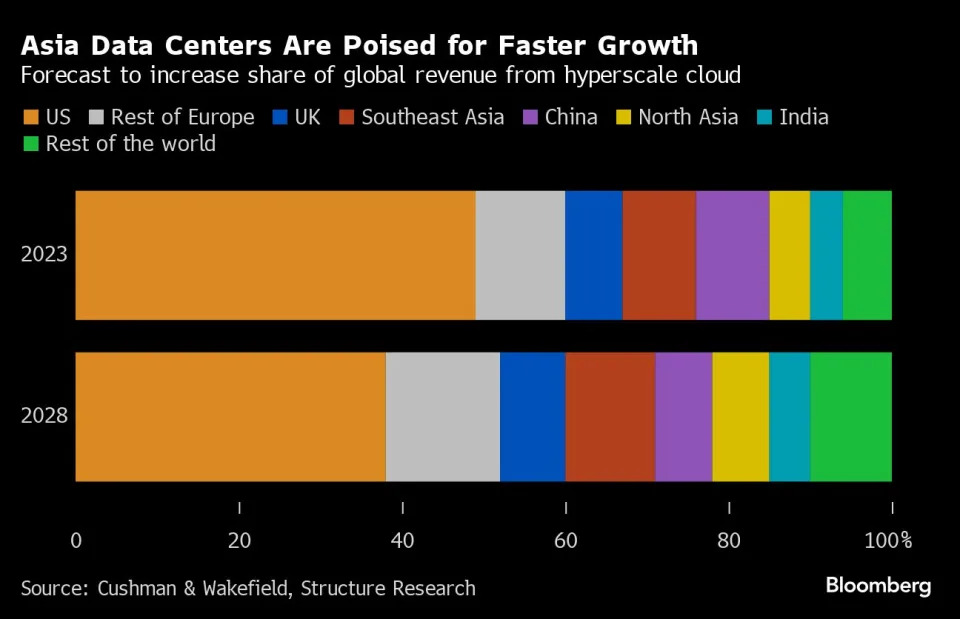

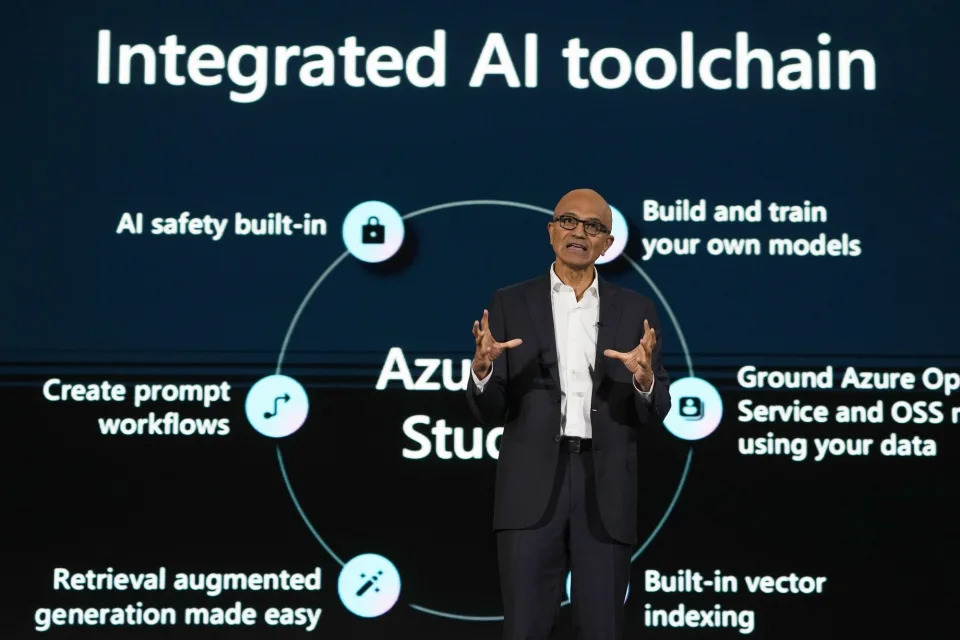

Olivia Poh and Suvashree Ghosh
Fri, May 10, 2024
(Bloomberg) -- Long considered a tech hinterland, Southeast Asia is fast emerging as a center of gravity for the industry.
The CEOs of Apple Inc., Microsoft Corp. and Nvidia Corp. are among the industry chieftains who’ve swung through the region in past months, committing billions of dollars in investment and holding forth with heads of state from Indonesia to Malaysia. Amazon.com Inc. just this week took over a giant conference hall in downtown Singapore to unfurl a $9 billion investment plan before a thousands-strong audience cheering and waving glow sticks.
After decades of playing second fiddle to China and Japan, the region of about 675 million people is drawing more tech investment than ever. For data centers alone, the world’s biggest companies are set to splurge up to $60 billion over the next few years as Southeast Asia’s young populations embrace video streaming, online shopping and generative AI.
Traditionally welcoming to Western investment, the region’s moment has arrived as China turns more hostile to US firms and India remains tougher to navigate politically. Silicon Valley is setting its sights on business-friendly regimes, fast-growing talent pool and rising incomes. The advent of AI is spurring tech leaders to pursue new sources of growth, laying the digital infrastructure of the region’s future.
“Countries like Singapore and Malaysia are largely neutral to the geopolitical tensions happening with China, US, Ukraine and Russia,” said Sean Lim, a managing partner at Singapore-based NWD Holdings, which invests in AI-based projects and other areas. “Especially with the ongoing wars, this region has become more attractive.”
Take Tim Cook and Satya Nadella, who last month embarked on their biggest tours across Southeast Asia in years. The investments they pledged are set to help turn the region into a major battleground between the likes of Amazon, Microsoft and Google in future frontiers such as artificial intelligence and the cloud.
The region’s growing workforce is making it a viable alternative to China as a center of talent to support companies’ global operations. As its governments pushed for improvements in education and infrastructure, it’s become an attractive base for everything from manufacturing and data centers to research and design.
“The governments are pro cross-border investments and there’s a deep talent pool,” said NWD’s Lim.
Southeast Asia has also become a sizeable market for gadgets and online services. About 65% of Southeast Asia will be middle class by 2030, with rising purchasing power, according to Singapore government estimates. That’ll help more than double the region’s market for internet-based services to $600 billion, according to estimates by Google, Temasek Holdings Pte and Bain & Co.
Apple, whose pricey gadgets for long remained out of reach for the vast majority in the region, is now adding stores. Chief Executive Officer Cook toured Vietnam, Indonesia and Singapore in late April, meeting prime ministers and announcing fresh investments as the company seeks new growth regions beyond China, where sales have sputtered.
In Jakarta, besides pow-wows with the country’s leadership, Cook met a local influencer with almost 800,000 Instagram followers over chicken satay, and learned enough of the local language to say “How are you” in a video circulated on social media. On his X account, local customers asked Cook for an Apple Store and better servicing of Apple products in the country. Following the trip, Apple reported its revenue in Indonesia had reached a record, even as total global sales declined.
“These are markets where our market share is low,” Cook said on a conference call last week. “The populations are large and growing. And our products are really making a lot of progress.”
Microsoft CEO Nadella also received an enthusiastic welcome after meeting with the leaders of Malaysia, Indonesia and Thailand last week. In Bangkok, under a ballroom’s shimmering chandeliers, he was seen shaking hands and conversing with high-ranking government officials and the country’s top business elites.
Southeast Asia’s draw becomes apparent once you consider slowing toplines in Silicon Valley, which is struggling now to lay the foundations of AI — anticipated to become an industry-defining technology. Within the next few weeks, two major AI-themed events in Singapore are set to feature top leaders from OpenAI, Anthropic, Microsoft and others to further tout the technology’s promise for Southeast Asia.
A specific catalyst for the tech companies is generative AI, with services like ChatGPT rapidly gaining users. Southeast Asia’s accelerating AI adoption has the potential to add about $1 trillion to the region’s economy by 2030, according to a report by consulting firm Kearney.
That means more data centers are needed to store and process the massive amounts of information traversing between content creators, companies and customers. Data center demand in Southeast Asia and North Asia is expected to expand about 25% a year through 2028, according to Cushman & Wakefield data. That compares with 14% a year in the US. By 2028, Southeast Asia will become the second largest non-US source of data center revenue in the world.
Hotspots include Malaysia’s southern Johor Bahru region, where Nvidia last year teamed up with a local utility for a plan to build a $4.3 billion AI data center park. Nvidia is also targeting Vietnam, which CEO Jensen Huang sees as a potential second home for the company, local media reported during his visit in December. Huang was spotted enjoying street food and egg coffee, a Vietnam specialty, as he hung out with local tech contacts in a black T-shirt and jeans.
The company has since reviewed Hanoi, Ho Chi Minh City and Da Nang as potential locations for investments, with Keith Strier, its vice president of worldwide AI initiatives, touring the cities last month.
A region consisting of about a dozen politically, culturally and geographically disparate countries, Southeast Asia isn’t the easiest market for global companies to operate in. Risks include difficulties navigating local working cultures, as well as the volatility of the various currencies, said NWD’s Lim.
But for now, the tech majors are embracing the region’s advantages such as its relatively low-cost yet highly skilled workforce — helpful for building expensive technologies such as large language models that require not just a lot of cash but also skilled engineers. Most of the US firms announced training programs with local governments, with Microsoft promising to train a total 2.5 million people in AI skills in Southeast Asia by 2025.
“This shift is influenced by both external and internal drivers,” said Nicholas Lee, associate director in political consultancy firm Global Counsel’s Singapore office. “Besides the intensifying US-China rivalry and policy divergence across major jurisdictions, subdued revenue growth and rising costs also underline the need for companies to manage expenses prudently.”
--With assistance from Chandra Asmara, Norman Harsono, Nguyen Xuan Quynh and Patpicha Tanakasempipat.
Bloomberg Businessweek
South Korea prepares support package worth over $7 billion for chip industry
Reuters
Sat, May 11, 2024
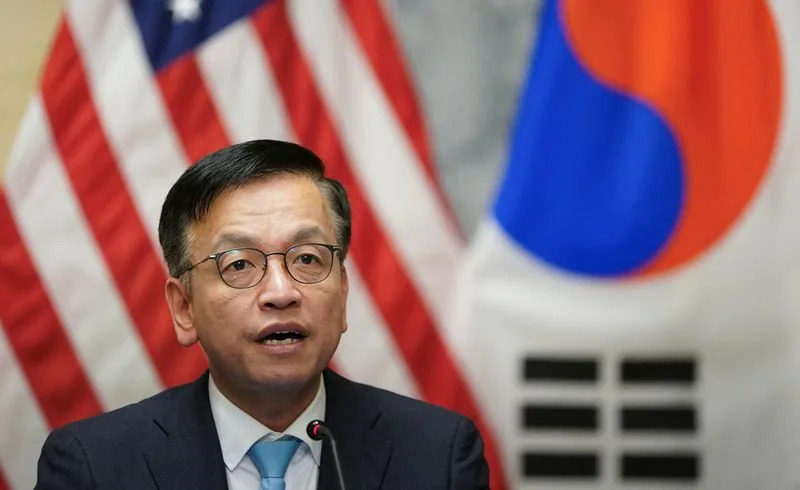
Yellen meets Japan and Korea counterparts in Washington
SEOUL (Reuters) - South Korea is readying plans for a support package for chip investments and research worth more than 10 trillion won ($7.30 billion), the finance minister said on Sunday, after setting its sights on winning a "war" in the semiconductor industry.
Finance Minister Choi Sang-mok said the government would soon announce details of the package, which targets chip materials, equipment makers, and fabless companies throughout the semiconductor supply chain.
The program could include offers of policy loans and the setting-up of a new fund financed by state and private financial institutions, Choi told executives of domestic chip equipment makers at a meeting, the finance ministry said in a statement.
South Korea is also building a mega chip cluster in Yongin, south of its capital, Seoul, which it touts as the world's largest such high-tech complex.
President Yoon Suk Yeol has vowed to pour all possible resources into winning the "war" in chips, promising tax benefits for investments.
($1=1,369.6500 won)
(Reporting by Ju-min Park; Editing by Clarence Fernandez)
Canada moves to push back start date for possible rail strike
Reuters
Fri, May 10, 2024

A Canadian National Railway freight train remains halted in Tyendinaga
OTTAWA (Reuters) - The Canadian government is moving to push back the start of a possible strike by railway workers at Canadian National Railway (CN) and Canadian Pacific Kansas City (CPKC), an official said on Friday.
Workers represented by the Teamsters union last week voted overwhelmingly to strike as early as May 22. Railways are critical to Canada's economy, due to its vast geography and exports of grain, potash and coal.
Late on Thursday, federal Labour Minister Seamus O'Regan said he had asked the Canada Industrial Relations Board to look at whether the strike might have safety implications. Until the board has issued a decision, the strike cannot start.
In an emailed statement, the Teamsters union said it was reviewing O'Regan's move and would "obviously comply with any order" from the board.
O'Regan acted after stakeholders expressed concern about the effect of a stoppage on healthcare infrastructure, in particular shipments of propane, which is used as a back-up generator fuel for rural hospitals, said the official, who requested anonymity given the sensitivity of the situation.
There is no set timeline for the board to issue a decision.
(Reporting by David Ljunggren, Editing by Franklin Paul)
Labour board to review safety concerns of potential rail strike, making delay likely
The Canadian Press
Fri, May 10, 2024

The federal government has asked the Canada Industrial Relations Board to review whether a strike by rail workers would jeopardize Canadians' health and safety, adding a new element of uncertainty in the lead-up to potential job action.
Prompted by concerns from industry groups, the request to the tribunal by Labour Minister Seamus O'Regan will likely push back a potential work stoppage that could otherwise start in less than two weeks.
"It is unlikely a decision will come down by May 22," said labour tribunal spokesman Jean-Daniel Tardif in an email. "Written submissions alone will likely take longer."
The board is set to examine what, if any, critical shipments must continue in the event of a strike or lockout, with a would-be work stoppage on pause until a decision on that issue is made.
"Serious concerns have been raised about potential impacts to the health and safety of Canadians. It’s our duty to look into this," O'Regan said in a social media post on Thursday evening.
Last week, employees at the country's two main railways authorized a strike mandate that could see some 9,300 workers walk off the job as soon as May 22 if they are unable to reach new agreements.
The Teamsters Canada Rail Conference, which represents conductors, engineers and yard workers at Canadian National Railway Co. and Canadian Pacific Kansas City Ltd., has warned that a strike at both companies simultaneously would disrupt supply chains on an unprecedented scale.
Industry groups have sounded similar alarm bells.
The Freight Management Association of Canada said a stoppage would see shipments of critical commodities such as chlorine for water and gasoline for cities grind to a halt, potentially jeopardizing residents' safety.
"With the two national railways out, major Canadian ports like Vancouver, Montreal, Halifax and Saint John, N.B., will be clogged with containers, unable to function. Canadian exports like lumber, potash, coal and iron ore will have nowhere to go. Plants and mines will close and workers will be laid off," said association president John Corey in an email.
The labour minister referred the issue to the industrial relations board after receiving a letter from the Canadian Propane Association, according to two sources with knowledge of the matter. The Canadian Press is not naming the sources because they were not authorized to speak publicly.
The minister highlighted heavy fuel, propane, food and water treatment materials needed in remote communities "and throughout Canada," the tribunal's Jean-Daniel Tardif said of O'Regan's referral.
The tribunal has broad authority on essential services in the event of a potential work stoppage, said Maya Fernandez, an associate with Nelligan Law in Ottawa who specializes in labour and employment law.
Employment and Social Development Canada states on its website that the minister "can ask the CIRB to intervene to decide what activities need to continue during a strike or lockout, even if the parties have a maintenance of activities agreement."
The parties are "banned from beginning a strike or lockout" until a decision comes down, the government states.
It is unclear exactly how long the review could last, but Fernandez said recent cases reveal the possibility of a drawn-out process.
“It can drag on,” she said, pointing to a dispute between Montreal port employers and dockworkers.
In March, the tribunal dismissed a request from the employers to require employees to work during a strike, opening the gate to a job action after a six-month delay while the query was under consideration.
Canadian Pacific Kansas City said the "unknown" timeline adds more uncertainty to a bargaining process that is coming down to the wire.
"Our supply chains need stability, now more than ever. CPKC believes these negotiations need to be resolved in a timely manner to provide certainty for the Canadian economy and for North America’s supply chains," said spokesman Patrick Waldron.
CN Rail spokesman Jonathan Abecassis said the "current uncertainty" hanging over a possible work stoppage "must be resolved decidedly and as soon as possible for employees, customers, and Canadians who depend on rail to get them everyday essential goods."
Teamsters Canada said rail workers would comply with any order from the labour board, "should any safety-critical needs be identified."
"A delay is still possible but we are hopeful that the CIRB will move quickly," said spokesman Christopher Monette.
After a pause in talks this week, the two sides are set to return to the bargaining table next week.
In its letter to the minister, the Canadian Propane Association said a variety of regions rely on the gas for community hospitals, senior facilities, food production, emergency measures services and schools.
This report by The Canadian Press was first published May 10, 2024.
Companies in this story: (TSX:CNR, TSX:CP)
Christopher Reynolds, The Canadian Press
700 hotel union workers launch 48-hour strike at Virgin Hotels casino near Las Vegas Strip
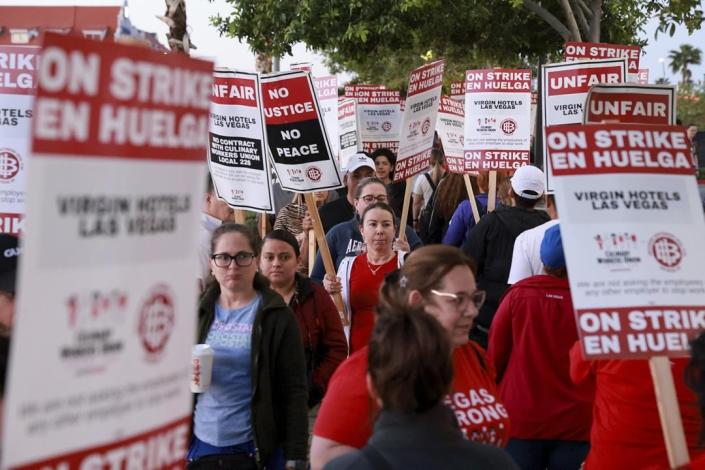
Fri, May 10, 2024
LAS VEGAS (AP) — About 700 workers walked off the job at a hotel-casino near the Las Vegas Strip at dawn Friday, in what union organizers said would be a 48-hour strike after spending months trying to reach a deal for new five-year contract with Virgin Hotels.
The Culinary Union, the largest labor union in Nevada, said the action marked its first strike in 22 years. The union authorized a citywide strike late last year, but it reached agreements with all the major hotel-casinos on the Strip for about 40,000 workers before the end of the year, and with most downtown and off-Strip properties in early February for 10,000 workers.
Guest room attendants, cocktail and food servers, porters, bellmen, cooks, bartenders, laundry and kitchen workers were among those walking a picket line in front of Virgin Hotels, formerly the Hard Rock Las Vegas, just west of the Strip, union organizers said.
Virgin Hotels filed a complaint with the National Labor Relations Board on Wednesday ahead of the anticipated strike, accusing the union of failing to negotiate in good faith “despite our sincere efforts to meet and negotiate.” It said union officials were engaged in “unlawful ‘take it or leave it’ bargaining.”
“Because the Union has not told us what agreements it believes are necessary to avoid a strike, we have asked the Union to join us in mediation as soon as possible,” Virgin Hotels said. “The goal of mediation is to reach an agreement without disrupting our guests and our team members’ lives with a work stoppage.”
While the weekend strike is far smaller in scale than the union's planned strikes last year on the Strip, the hotel-casino is still a notable Sin City landmark because of its proximity to the Strip and the airport, and because an 80-foot-tall (24-meter-tall) neon guitar sign stood on the plot for decades before it was removed for the property's transformation into Virgin Hotels.
The last time Culinary Union members went on strike was in 2002 at Golden Gate hotel-casino in downtown Las Vegas.
Earlier this year, union members at other Las Vegas-area properties reached deals giving them a roughly 32% salary increase over five years, including 10% in the first year.
Ted Pappageorge, secretary-treasurer for the Culinary Union, said they had called off a strike deadline at Virgin Hotels in February when the looming Super Bowl helped put pressure on other hotel-casinos to come to the bargaining table in order to give management more time to address its financial situation and reach a settlement at the 1,500-room hotel-casino.
But he said they had waited long enough and were hopeful the 48-hour strike would help expedite a new agreement on wage and benefit increases.
“It’s been nearly one year since the contract at Virgin Las Vegas expired on June 1, 2023 and workers are still working without a contract," he said in a statement.
Pappageorge told reporters at a news conference on Thursday that the complaint to the NLRB had no merit.
“The charge is just a company stunt, and it’s unfortunate and sad that they’ve waited until the eve of the strike to even have that kind of discussion,” Pappageorge said.
The Associated Press
CAPPLETALI$M
Apple's Maryland store workers vote to authorize strike
Reuters
Updated Sat, May 11, 2024
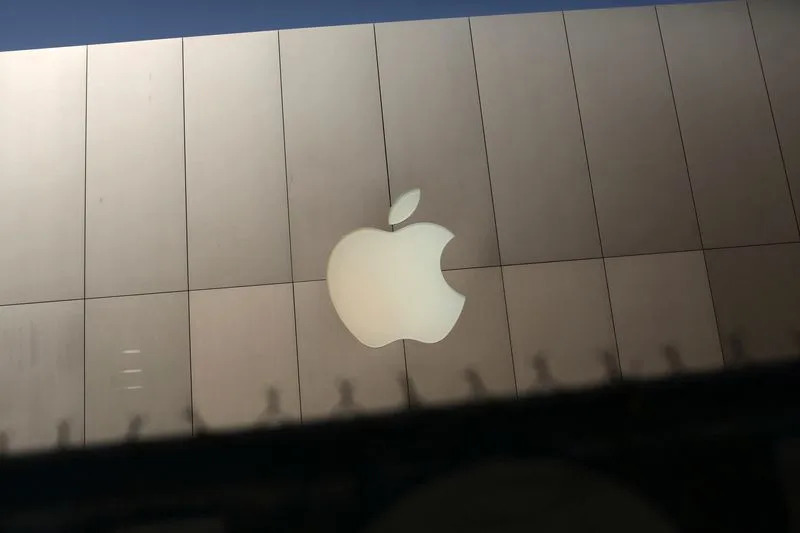
Fencing used for construction of the Central Subway obscures Apple's flagship retail store in San Francisco
(Reuters) -Workers at Apple's store in Towson, Maryland, have voted in favor of authorizing a strike, the International Association of Machinists and Aerospace Workers (AIM) said in a statement late on Saturday.
The date for work stoppage has yet to be decided, according to the union, which represents Apple's retail store workers in Maryland.
"The issues at the forefront of this action include concerns over work-life balance, unpredictable scheduling practices disrupting personal lives, and wages failing to align with the area's cost of living", IAM said in the statement.
"We will engage with the union representing our team in Towson respectfully and in good faith," an Apple spokeswoman said.
In June 2022, Apple workers at Maryland voted to join the International Association of Machinists and Aerospace Workers union, becoming the first retail employees of the tech giant to unionize in the United States.
Meanwhile, workers at Apple's store in Short Hills, New Jersey, voted against unionizing, Bloomberg News reported on Saturday.
Communications Workers of America (CWA), which filed complaints with the National Labour Relations Board (NLRB) alleging illegal union-busting by Apple at the New Jersey store and others, blamed the defeat on the company's behavior, the report said.
Apple retail staff at its New Jersey store had filed for union representation with Communications Workers of America on April 8, according to John Nagy, who is the operations lead at the Short Hills store and a member of the organizing committee
Apple did not respond to requests for comment on the vote against unionization. CWA and the NLRB did not immediately respond to a Reuters request for comment on the Bloomberg report on the New Jersey workers' vote.
(Reporting by Gnaneshwar Rajan and Chandni Shah in Bengaluru; Editing by Jacqueline Wong)
Cocoa Rises in Quieter Trading as More Analysts See Price Peak
Ilena Peng and Celia Bergin
Fri, May 10, 2024


(Bloomberg) -- Cocoa futures edged higher in New York in relatively subdued trading as more market watchers say this year’s historic rally has peaked.
Futures rose as much as 2.4% in New York, reversing losses from earlier in the day. Volatility remains high in the market as open interest is low, but the magnitude of price moves has been smaller compared to the swings seen in recent weeks.
Rabobank analyst Paul Joules said in a Friday report that the cocoa rally has peaked, with lower production this season “now fully incorporated in the market price.” However, the world is expected to be in deficit both this year and the following, making prices unlikely to return to “normal” levels quickly.
“A combination of weakening global demand and production responses, particularly from countries without a fixed farmgate price, will help alleviate the pronounced uncertainty baked into current futures pricing,” he said. Still, “it’s likely that inflated cocoa prices will stick around for the next few years.”
Joules sees New York prices easing to an average of $7,000 a metric ton in the fourth quarter. Last week, Citi Research analysts revised their price target for the next three months down to $8,500 a ton, saying that the recent selloff lent more confidence that prices had peaked.
New York futures are currently trading just below $9,000 a ton, after jumping as much as 15% on Tuesday — the biggest intraday move since 1960 — to recover from a steep slide last week. Prices had soared to a record above $11,000 a ton in mid-April on the back of severe shortages.
In the near term, some showers are expected for West African nations like Ivory Coast and Ghana in the next five days, which “would aid some crop growth and could slightly improve soil moisture for some areas,” according to forecaster Maxar Technologies Inc.
Most Read from Bloomberg Businessweek
U$ Fed Flags Rising Delinquencies in Commercial Real Estate Loans
Ben Bain
Fri, May 10, 2024

(Bloomberg) -- Banks are preparing for further losses as delinquencies in loans tied to office space continue to rise, according to the Federal Reserve.
The Fed said Friday that the rate of late payments on some commercial real estate loans had surged to above its pre-pandemic level. Officials at the central bank are focused on “improving the speed, force and agility of supervision, as appropriate,” the Fed said in a semiannual report.
US bank regulators, including the Fed, have been sounding alarms about the commercial real estate market. About a year ago, officials asked lenders to work with creditworthy borrowers that are facing stress in the sector. Property owners have come under pressure as borrowing costs have soared.
Potential risks were spotlighted earlier this year by the troubles at New York Community Bancorp, fueled by concerns linked to a portfolio that included billions of dollars in apartment loans in New York’s rent-regulated complexes.
Read More: Powell Says US Banking System Can Withstand Threats From CRE
Despite the concerns, Fed Chair Jerome Powell and other officials have said the US banking system is strong enough to cope with the CRE risks.
Most Read from Bloomberg Businessweek
















